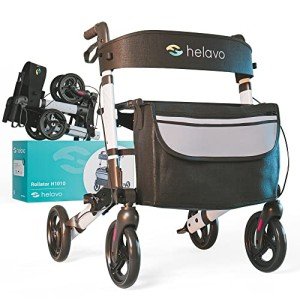It's The Complete Cheat Sheet For Modern Walker
The Evolution of the Modern Walker: A Comprehensive Look
Walking has long been a fundamental human activity, essential for mobility and self-reliance. The modern walker, a crucial tool for those who need additional support while traversing the world, has evolved considerably over the years. This article will explore the advancement, types, benefits, and frequently asked questions about modern walkers, acting as a guide for anyone considering this mobility aid.
A Brief History of Walkers
The history of walkers can be traced back to the early 20th century. Originally designed for rehabilitation, the first designs were fundamental and supplied limited support. Nevertheless, as our understanding of mobility requires advanced, so too did the design and functionality of walking aids.
Timeline of Walker Development
Year
Advancement
1930s
The very first walkers were produced, mostly for rehabilitation functions.
1960s
Introduction of foldable designs for simpler storage and transport.
1980s
Adoption of lightweight materials, improving mobility without sacrificing strength.
1990s
Emergence of walkers with wheels, assisting in smoother movement.
2000s
Modern walkers incorporated with extra features such as seats and storage compartments.
The evolution of walkers highlights not just improvements in engineering and materials but likewise a growing awareness of diverse user requirements.
Kinds Of Modern Walkers
Today, there is a variety of walkers offered to accommodate different ages, mobility levels, and user preferences. Below is a list of the most typical types:
Standard Walkers: Basic models without wheels, using optimal support. Perfect for those requiring substantial stability.
Wheeled Walkers (Rollators): Equipped with 2 or four wheels, these walkers permit smoother motion. Learn Additional featured built-in seats for resting and storage for personal items.
Posterior Walkers: Designed to promote a more natural walking design, these are utilized by people recuperating from surgery or injury.
Travel Walkers: Lightweight and collapsible, best for seniors and those on the go.
All-Terrain Walkers: Built with larger wheels and durable frames, ideal for outdoor usage on uneven surfaces.
Comparison Table of Walker Types
Type
Wheels
Seat
Stability
Mobility
Best For
Standard Walker
No
No
High
Moderate
Users requiring max support
Wheeled Walker
Yes
Yes
Moderate
High
Active users needing mobility
Posterior Walker
No
No
High
Moderate
Rehabilitation from injuries
Travel Walker
No/Yes
Optional
Moderate
Extremely High
Frequent travelers
All-Terrain Walker
Yes
Yes
Moderate
Moderate
Outdoor lovers
Benefits of Using a Modern Walker
Utilizing a walker can substantially boost the quality of life for individuals with different mobility difficulties. Here's a breakdown of the main benefits:
- Increased Stability: Walkers decrease the risk of falls, providing support and balance.
- Self-reliance: They empower users to move easily without dependence on others.
- Enhanced Posture: Walkers motivate users to preserve an upright position, which can minimize neck and back pain.
- Adaptability: With alternatives fit for various terrains and needs, walkers can be tailored to private choices.
- Enhanced Mobility: Many walkers are developed for ease of motion, permitting more active way of lives.
Regularly Asked Questions (FAQ)
1. What size walker do I need?
Choosing the best size is important for comfort and efficiency. Preferably, walkers must be adjusted so that the handlebars are at wrist height when standing upright. A lot of models are adjustable for height.
2. Can I utilize a walker for long-distance walking?
While walkers supply exceptional support and stability, it is best to speak with a healthcare expert concerning long-distance use, as fatigue can set in with time.
3. Do I require a prescription to obtain a walker?
In a lot of scenarios, a prescription is not essential, but it's helpful to talk to a physical therapist or medical professional, especially for those with specific medical conditions.
4. How do I keep my walker?
Regular upkeep is vital for safety and performance. Check for loose screws, tidy the tires or wheels, and examine the frame for any wear or damage.
5. Are walkers covered by insurance?
Numerous insurance coverage strategies cover walkers, specifically when prescribed by a physician. It's a good idea to consult your insurance coverage supplier for specific standards.
The modern walker has actually come a long way from its early styles, progressing into a versatile aid that can accommodate a vast array of mobility requirements. With numerous types offered, it is important to consider specific requirements before purchasing. By comprehending the types, benefits, and upkeep of walkers, users can choose the ideal design to boost their mobility and self-reliance. As technology continues to progress, we can undoubtedly expect a lot more innovative designs in the future, additional empowering people with mobility challenges.
